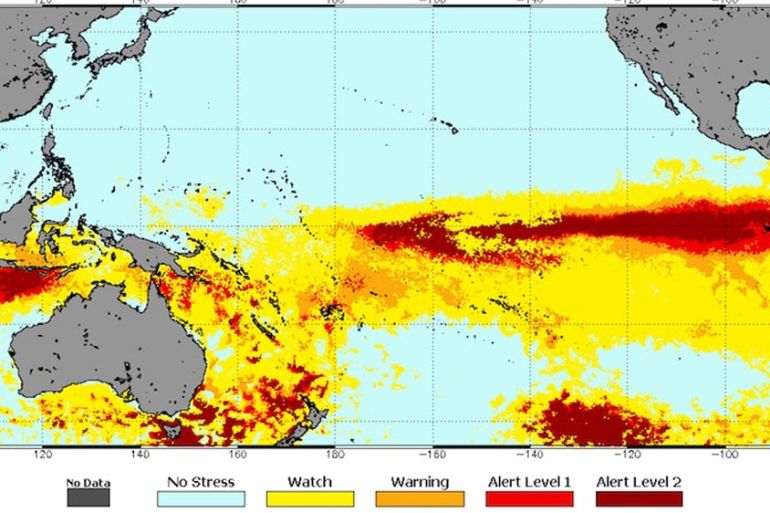Great Barrier Reef sees ‘worst mass bleaching in years’
A combination of warming ocean waters and a major El Nino event highlights just how sensitive are coral reefs.

The Great Barrier Reef stretches 2,000km along Australia’s northeast coast and is the world’s largest living ecosystem. Last May, UNESCO’s World Heritage Committee stopped short of placing the reef on an “in danger” list, but the ruling raised long-term concerns about its future.
The Coral Reef Studies group from Townsville’s James Cook University filmed more than 500 coral reefs, over a period of six days, from Cairns to Papua New Guinea.
Keep reading
list of 4 itemsAfter the Hurricane
World’s coral reefs face global bleaching crisis
Why is Germany maintaining economic ties with China?
The results suggest that areas of this World Heritage Site are experiencing the worst bleaching in 15 years. The most untouched part of the Great Barrier Reef is seeing the most severe bleaching in history.
Coral may survive bleaching
The process of bleaching isn’t straightforward; it is the result of the coral ejecting its colour-giving, food producing algae, zooxanthellae.
These single-celled symbiotic partners contain chlorophyll and vary their output with changing light levels and temperature.
Too much production can’t be accommodated by the coral, so it throws out some algae. This results in the coral returning to its natural bleached white.
The zooxanthellae provide nutrients and oxygen to the coral polyps and, in return, the coral provides shelter and carbon dioxide to the algae.
Coral can survive a bleaching, rather as we would hold our breath, if external conditions return to normal fairly quickly. If they don’t, it will starve to death.
The El Nino ‘experiment’
Warming oceans are a permanent change but El Nino is temporary and acts as a natural experiment. During this fast and significant water warming, the tolerance of coral can be studied.
Coral can only survive within a narrow band of ocean temperature, so the one or two-degree change during an El Nino event will cause damage.
The global bleaching that struck during and after the major El Nino of 1997-98 was the first global-scale mass bleaching ever recorded. Sixteen per cent of the world’s reefs died following this mass bleaching.
Then in 2010 came the second mass global bleaching, again triggered by an El Nino event, on top of long-term warming. 2015 was the hottest year on record and 2016 could be even hotter, with El Nino “piggy-backing” and making conditions more extreme.
The current El Nino event is declining but it will take a while for the waters around the Great Barrier Reef to cool down to normal levels.
The risk of human emissions
About a third of all carbon dioxide emitted by human activity is absorbed by the oceans. Coral growth rates in the Great Barrier Reef have dropped by 40 per cent in the last 40 years, apparently in large part due to the acidifying influence of human-produced carbon dioxide absorbed by the oceans.
The branches of coral are made of calcium carbonate, laid down by the polyps. Unfortunately, it is dissolved in acid so the more carbon dioxide the ocean absorbs, and the more acidic it becomes, the worse the prospects are for coral.